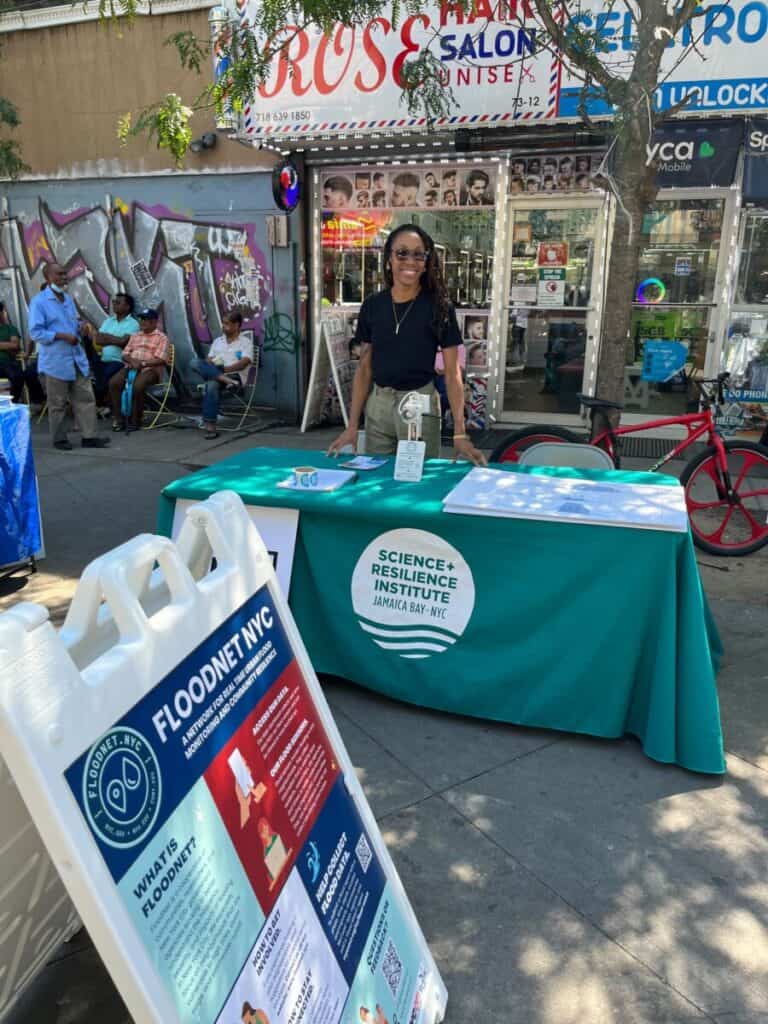A team representing the Science and Resilience Institute at Jamaica Bay (SRIJB), the CUNY Advanced Science Research Center, New York University, the New York City Mayor’s Office of Climate and Environmental Justice, The Mayor’s Office of Technology and Innovation, New York Sea Grant, and others published a research article this month describing the FloodNet project, a city-wide program to monitor and gather data on flooding in urban settings.
The article, “FloodNet: Low-Cost Ultrasonic Sensors for Real-Time Measurement of Hyperlocal, Street-Level Floods in New York City,” was published on May 7, 2024 in Water Resources Research 60, https://doi.org/10.1029/2023WR036806. Authors include SRIJB Executive Director Brett Branco, New York Sea Grant’s Hannah E. Burnett and Kathryn Graziano, FloodNet Community Engagement Manager and CUNY PhD student Vèronëque Ignace, FloodNet program manager Polly Pierone.

Amid massive, climate change-induced flooding of the type seen recently in cities in Southern Brazil, an affordable, effective method to gather data on urban flooding is more necessary than ever. “Of the many hazards that are expected to increase with climate change, flooding is one of the most dangerous and costly (National Academies of Sciences, Engineering, and Medicine, 2019) and can have a large influence on public health, infrastructure, and mobility in urban areas (Galloway, et al, 2018),” the researchers wrote. Sea level rise is contributing to the problem, they wrote, making it urgent that stakeholders receive “real-time, accurate and reliable data on flood events, including flood frequency, depth, and profile in flood-prone locations (Silverman, et al., 2022).” Past research tools to monitor urban flooding have fallen short in various ways toward meeting that goal, unlike FloodNet which “offers a novel approach to developing a scalable, reliable, and informative flood-sensing network to aid in urban resilience efforts.”
The sensors can be called novel because they were designed to be “compact, rugged, low-cost, and independent of existing urban power and network infrastructure,” the authors wrote. That means that if the power goes down in a flooded area, as it often does, the FloodNet sensors will continue to provide real-time data to researchers and to authorities so that first responders can know where resources are most needed. As of 2023, the total cost for a FloodNet sensor and mounting was less than $200, making them affordable even for cities in developing countries such as Brazil.
The project, which is a collaboration between researchers at CUNY, NYU, New York City government and flood-prone communities, has installed 108 sensors around the city as of May 9, 2024 (dataviz.floodnet.nyc). Over the next five years, there is funding to install a total of 500 with input from communities about where they may be needed most. You can read more about the FloodNet project at floodnet.nyc.






